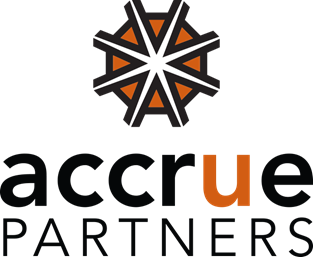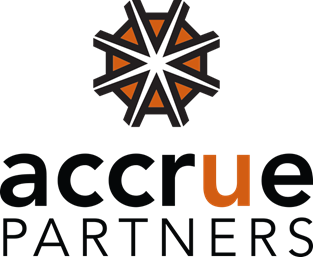
Leaving one commitment to start something new can be challenging in any area of your life. When it comes to your job, where you might spend 40 hours or more of your time each week working, a bad job change can majorly impact your happiness and health.
The Great Resignation opened up lots of opportunities for professionals today. Many businesses have positions to fill, as quit levels have reached record highs. According to the U.S. Bureau of Labor Statistics, in 2021,
an average of nearly 4 million people a month quit their jobs. That’s the highest average on record, increasing from 2019’s average of 3.5 million quits a month.
2022 numbers are even higher, with resignations reaching 4.4 million in March 2022. But not all people who quit their jobs embrace the new opportunity. A March 2022 Harris Poll survey for “USA TODAY” found
around 20% of employees who quit during the past 2 years regret it. Only 26% of job switchers plan to stay at their jobs.
For younger employees, the rate of regret is even higher. A 2022 survey of 2,500 respondents found that 72% have experienced “Shift Shock,” a feeling of regret or surprise that a position differs greatly from expectations once a new job starts. The Muse reports Gen Z and Millennial candidates are driving the Shift Shock trend.
As a working professional, you might have seen or will be offered new opportunities during this period of the Great Reassessment. To avoid making a move that leads to unhappiness and regret, follow these best practices.
Take Your Time
First, be aware of the risk of FOMO, which describes the “fear of missing out”. FOMO has strong ties to social media when we see others doing things that seem positive. Anyone who’s on the professional networking site LinkedIn will see updates of their contacts when they announce new jobs or enter new industries during this Great Reshuffle.
Avoid job-hopping just because your contacts are doing it. If you see people quitting your current employer, that could also trigger FOMO.
Know that any company that’s interested in your talent will be willing to work with you as you navigate the new job consideration process. Rushing into a job search or quickly accepting a new job offer can cause more problems in your life.
Your job is a big commitment. . As you go through the job search process, take as much time as you need to research the company, learn about the culture and understand the role and responsibilities. Don’t commit to something you’re not completely confident in and excited about.
If you’re working with a recruiter, be honest about how much time you really need to consider a position. Communicate clearly about what you need to make the right career move so that the recruiter can be your advocate and protect you from missing out on a position in the meantime.
Do Your Research
Most companies that want to hire someone will present themselves in the best light. That’s what can cause Shift Shock. What you understand about a job during the recruitment phase may be completely different than the actual day-to-day operations.
When you’re considering a position, learn as much about the company and job as you can. Here are some tips.
- Read the company’s website. Pay attention to the company overview, founding, and about us pages. Try to get an idea of the company culture, mission, and values to see if they align with yours.
- Look up the company on social media and review sites. See how the company presents itself in content, what type of customer service it provides, and what customers are saying about the business.
- Search for news about the business. Type in the business name into a search engine to see what news pops up about the company. You can also search for company leaders’ names to research their reputations online.
- Talk to those in your network. Search for the company on LinkedIn to find people you’re connected to who also have connections to the company. You can ask those people for their honest evaluations of the business and, potentially, the role you’re considering.
- Ask company representatives lots of questions. During an interview, you can also ask the interviewer how they’d describe their company culture. If you’re interviewing multiple people, you can ask each one what they enjoy about working for the company or in their role. Ask the work style the role requires. For example, if you’re an introvert who prefers to work autonomously, ask about the number of meetings you’ll be required to be in. Be honest about your preferred work style so you can ensure you’re a fit for the role and the role fits you.
If you’re early in the job-seeking phase and you’re considering a complete career change, you can do research first to see if the career is something you’d truly be interested in pursuing. In addition to online research about a new career path, you can reach out to employers in the industry to request a job shadow opportunity. This can help you better understand what a specific career or role might require, so you can feel more confident pursuing that career path.
Map Out Your Career Goals
Think long-term about what you want out of a career. Do you want to make meaningful contributions? Increase your paycheck to a certain number? Lead big teams?
There may be ways to achieve these goals with your current employer, but your current company may not be aware of what your objectives are. If you don’t yet have a career development plan, ask your manager about creating one. These plans provide professionals with a roadmap, so they know what they need to accomplish in order to progress in their careers.
A long-term view of what you want out of a career can help you avoid making hasty decisions. It also helps you focus on what you want out of a job. If you decide to actively interview or get contacted by recruiters for opportunities, you can use your career development plan to explain what you’re looking for and save time if the opportunity isn’t the right fit.
You have tremendous power in how you shape your career. To get there, you need to clearly communicate what your objectives are and the steps needed to reach them…
You might need training in a certain subject or experience in a particular role. With a career development plan, you can help your current employer or potential employers understand how they can help you succeed.
What If It’s Too Late?
If you’re in a new position and are feeling regret, don’t despair. As we cover in our whitepaper, boomerang employees are increasingly common during this time of the Great Regret. A boomerang employee is one who leaves one employer and then returns later on. Many companies are open to re-hiring employees who have quit since they require less training and already have deep knowledge of company operations.
When you quit a job, make sure to resign on good terms. Offer at least two weeks’ notice to help with the transition. Stay in friendly professional contact with your former boss and employees.
Keep up with company news to stay abreast of new developments.
If you regret moving into a new position, reach back out to your former employer if you want to return. Be honest about why you left. It might have been because you really thought you had a great opportunity to grow your career, but things happen. Many employers will be understanding. They may even welcome you back with open arms.
If you know you’re ready to move on from your current position and want help finding great opportunities, contact AccruePartners to connect with our recruiter team.





